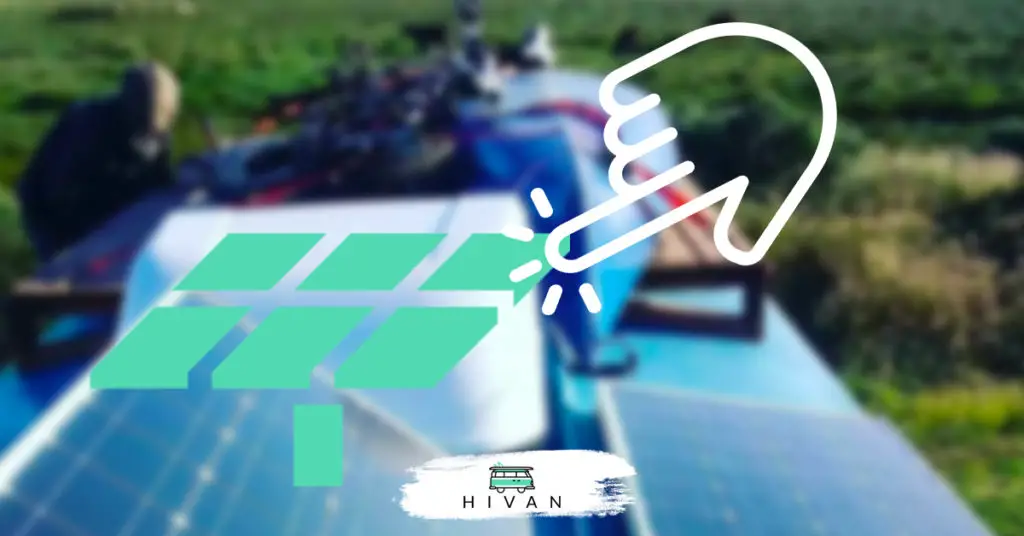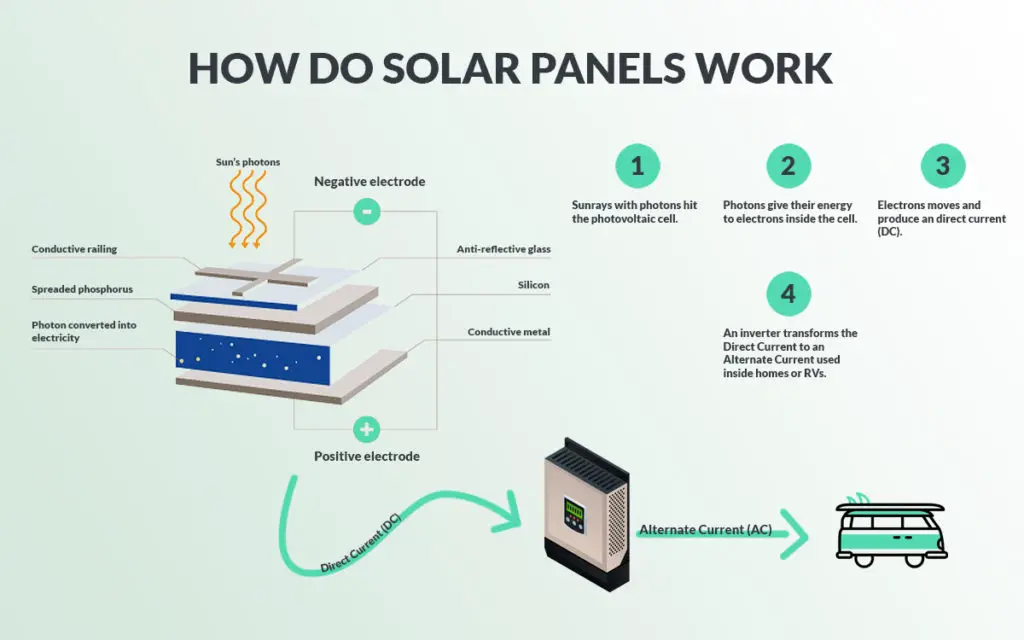Hi-van is supported by its audience. When you purchase using our links, we may earn an affiliate commission (no added cost to you). Learn more
It can be daunting to ask yourself if you can touch or put something on your solar panels if you don’t know how they work. Solar panels can produce electricity from sunlight, and as with any electrical installation, there’s always a risk, mainly if a fault occurs.

Solar panels are not dangerous if they’re not damaged and are operating under the conditions recommended by their manufacturer. They’re designed to let you touch their top covering glass and their aluminum frame safely.
However, solar panels can get pretty hot during summer when temperatures rise. Therefore, it is better to protect your hands with gloves before touching them, and you shouldn’t leave random things on their surface as they could melt or even burn.
This article will briefly explain how solar panels work and give you the best safety measures and precautions to operate them.
How do Solar Panels Work? 5 Minutes Explanation
A

Here’s a popularising resume to explain to you how solar panels work:
- Sunlight and, in particular photons, hit your
solar panel . - The photons knock the silicon electrons off.
- Those loose electrons create an electric current, in this case, direct current (DC).
- An inverter then converts the direct current to an alternate current.
Safety around Solar Panels for Van Life
Solar panels produce an electric current, and therefore you’d like to take the accordingly safety precautions to avoid a variety of hazards.
- Protect yourself against shocks or electrocutions from contacting wiring.
- Never walk on solar panels unless their manufacturer stipulates that you can.
- Never cut the conduit or the solar system’s electrical wiring while in use.
- Never connect and/or use a damaged
solar panel . - Ensure yourself that your solar panels are correctly fixed to your van’s roof. Here’s an article to help you chose the best adhesive for your flexible solar panels.
- Always install correct wire size following manufacturer instructions.
- Select solar panels that produce the right amount of energy for your solar system. More info here.
If you have any doubts concerning your installation or are not confident enough to start building your solar system, I highly recommend you call a professional to handle everything. Accidents can occur quickly when electricity is not handled perfectly.
Find this content useful 🙂 ?
Subscribe to our Newsletter and get a free Solar Electric Diagram + shopping list.
Solar Panels Misconceptions:
Fire hazards because of electricity: every time electricity is involved, people are concerned about fire hazards. It is true that if you’re not correctly wiring an electrical device, it can quickly catch on fire. But if everything is correctly wired and installed together, there’s no reason for fire hazards. Furthermore,
Fire hazards because of heat: another misconception concern heat. People like to think that photovoltaic solar panels need heat to create electricity, and therefore there’s a risk of fire hazards. That’s wrong, and heat generally reduces the efficiency of any solar panels. Manufacturers design their solar panels to withstand the heat, and it’s normal for them to get hot and really hot during burning summer days.
To Conclude
It is essential to understand that solar panels are designed and produced to be under direct sunlight and to withstand high heat from it. That’s why, if you’d like to touch a

